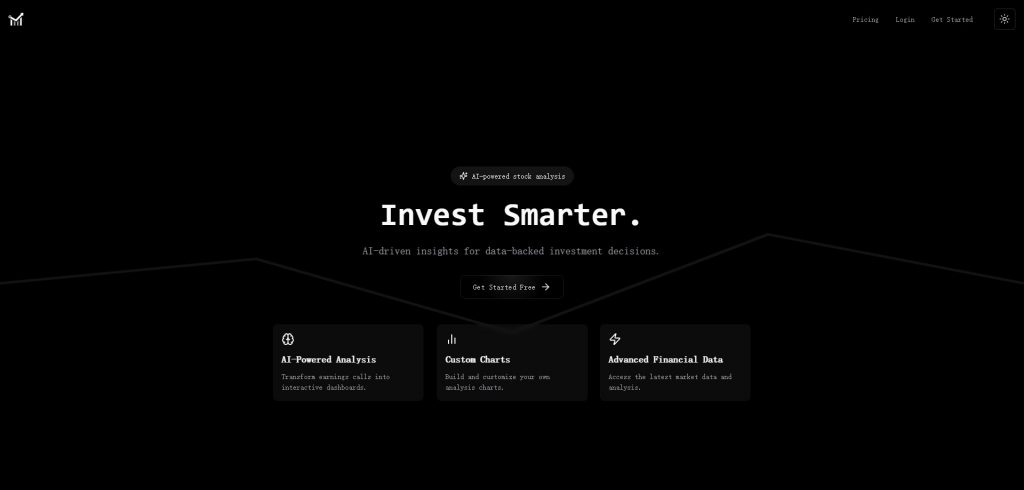The security and privacy of trading platforms built on AI are vital, considering that they handle personal and financial data. In the event of a data breach or misuse, it could lead to financial and reputational losses. Here are 10 best tips to assess the privacy and security of these platforms.
1. Examine Data Encryption
Secure transmission of information: Make sure your platform uses secure protocols (e.g. SSL/TLS), to encrypt information transmitted between your devices and their servers.
Verify encryption at the time of rest. Verify that sensitive data is encrypted on the server platform, using secure standards of encryption (e.g. AES-128).
Verify if the platform supports end-to-end encryption of sensitive data or communications.
2. Examine the Authentication Measures
Two-factor authentication (copyright) Check if the platform supports copyright to give you an extra layer of security.
Biometric authentication: Determine whether the platform supports biometric login methods (e.g., fingerprint, facial recognition) for mobile applications.
Password policies. Verify whether the platform is enforcing strong password policies (e.g., length minimum, the requirement for complexity).
3. Verify compliance with the regulations.
Financial regulations: Ensure your platform complies all relevant financial laws (e.g. SEC FINRA MiFID II).
Data protection laws: Check for compliance with data privacy laws (e.g. GDPR, GDPR, CCPA) If you're in or trading with regions which are covered by these laws.
Audit certifications. Check that the platform you're considering has passed an independent assessment of security or certificates.
Review Data Access Controls
Role based access: Use role-based accessibility controls to limit access to data to only authorized users.
Permission levels - Make sure that you can assign different permissions to users or members.
Activity monitoring: See whether the platform tracks and monitors the user's activity for any suspicious activity.
5. Assess Vulnerability and Management
Regular updates: Ensure that your platform is always updating its software in order to patch security holes.
Penetration test: See if your system is tested regularly to find and fix any security weaknesses.
Find out if the platform provides an incentive to researchers to discover weaknesses.
6. Evaluate Data Privacy Policies
Transparency: Review the privacy policies of the platform to understand how your data is used, gathered, and shared.
Data minimization is a method of ensuring that only data necessary for operation are gathered by a platform.
Data sharing with third parties: Check that the platform is willing to share your data with a third party, and in the event that it is in the process of sharing, what.
7. Check for Secure API Utilization
API security. It is important to ensure APIs utilize secure authentication methods (e.g. OAuth keys, API keys), and that data is protected.
Rate limits: Find out if there are rate limits within the API to deter brute force attacks or misuse.
Access logs: Check whether the platform records API access and usage for auditing and monitoring.
8. Review the Recovery of Incidents and Response
Incident response plans: Make sure that the platform you are using has a clearly defined incident response plan. This plan should address handling security breaches and data breaches.
Notification policies: Check if the platform notifies users promptly in the event of a security breach.
Backups of data: Make sure the platform regularly backs up data and has a disaster recovery strategy in place.
9. Review the physical security measures
Security of the data center: Make sure your platform's servers are housed in secure data centers with physical security measures (e.g., surveillance, access control).
Redundancy Verify the redundant systems of the platform in order to ensure that data is available in the event of the hardware fails.
Geographic distribution: Make sure that the data is distributed to different geographical locations to improve the resilience.
10. Privacy controls for users to test
Data deletion: Ensure the platform will allow you to erase your personal information permanently when you stop using the service.
Privacy settings - Examine to find out if the platform allows users to set privacy settings to let you to control what data is shared with others or made public.
Make sure that data is anonymized to ensure that it is not used for machine learning and analytics.
Bonus Tips
Reputation and reviews of users Check out the feedback and reviews of users in order to gauge the level of security and privacy the platform is.
Trial period for free: Test the privacy controls of the platform and security features by using the demo.
Customer Support: Make sure that the platform is able to provide a robust support in the event of security issues.
By following these tips, you can effectively assess the privacy and security of AI platform for predicting and analyzing stocks making sure your personal financial and personal information is protected. A secure platform not just safeguards assets, it also builds confidence in their services. Take a look at the recommended best ai stock advice for website tips including free ai trading bot, using ai to trade stocks, ai copyright trading bot, investing in ai stocks, trading with ai, copyright ai bot, copyright ai bot, stocks ai, best ai stocks to invest in, best ai stocks to buy now and more.

Top 10 Ways To Evaluate The Regulatory Conformity Of Ai Stock Analysis And Prediction Platform
The compliance with regulatory requirements of trading platforms that employ AI to analyze or predict stock prices is an important factor. Compliance ensures that a platform is in compliance with financial regulations, is operating within legal frameworks, and protecting the user's data. This minimizes the chance of financial penalties or legal issues. Here are the top 10 suggestions on how to evaluate the compliance of these platforms.
1. Verify Registration and Licensing
Authorities regulating the platform: Make sure that the platform's license and registration is with the relevant financial regulatory authorities (e.g. SEC or FCA in USA, ASIC or ASIC in Australia).
Verify broker partnerships. If the platform integrates brokers, make sure they're licensed and monitored.
Public records: You can look on the official website of the body that regulates it to see if the platform is registered and if there have had any violations over the years.
2. Assess the privacy of your data Compliance
GDPR: If operating or serving users within the EU, ensure the platform meets the requirements of the General Data Protection Regulation (GDPR).
CCPA: California Consumer Privacy Act compliance is mandatory for all users.
Policy on handling data: Ensure you read the privacy policies to know how users' data is gathered and stored.
3. Evaluation of Anti-Money Laundering Measures
AML policies: Make sure that the platform is equipped with robust AML policy that can detect and stop any laundering of money.
KYC procedures - Ensure that the platform complies with Know Your Customer procedures for verification of user identities.
Monitoring transactions: Ensure that the platform monitors transactions to detect suspicious behavior and inform authorities about suspicious activity.
4. Make sure you're in compliance with Trading Regulations
Market manipulation: Make sure that the platform contains measures to stop market manipulations such as fake trading, wash trading.
Order types: Ensure that the platform adheres to rules regarding order types.
Best execution: Check to see if the platform is adhering to the best execution method to ensure that trades will be executed at the lowest possible cost.
5. Assessment of Cybersecurity's compliance
Data encryption: Ensure that the platform has encryption in place to protect user data in transit and at rest.
Incident response Incident response Verify the system's plans to take action in the event of cyberattacks or data breaches.
Certifications: Check if the platform has cybersecurity certifications.
6. Transparency and Disclosure A Review
Disclosure of fees: Ensure that the platform is transparent about all fees that are hidden, as well as any additional fees.
Risk disclosure: Make sure the platform has disclosed the risks involved, particularly in the case of high-risk strategies or trading using leverage.
Performance reporting: Make sure that the platform offers transparent and accurate reports regarding its AI models.
7. Make sure you're in the compliance of international regulations
Trans-border trade. If you intend to conduct international trade, make sure that your platform complies with all applicable regulations.
Tax reporting: Find out if the platform offers tools or reports to assist users adhere to tax regulations.
Respect for international sanctions: Ensure that your platform is in strict compliance with these and doesn't allow trading with prohibited entities or countries.
8. Examine Record-Keeping and Audit Trails,
Transaction records: For compliance and auditing purposes, ensure that the platform maintains full logs of each transaction.
Recordings of user activity: Check whether the platform records user activity including logins or trades as well as changes in settings for your account.
Audit readiness: Ensure the platform is equipped with all the logs and documentation required for a regulatory review.
9. Verify compliance with AI-specific Regulations
Algorithmic rules of trading: If the platform permits the use of algorithms, it should be in compliance with European regulations, such as MiFID II and U.S. Reg SCI.
Fairness and bias: Determine whether the platform reduces or checks its AI models to ensure fair and ethical trading.
Explainability: As stipulated by specific regulations, the system should be able to provide clear explanations for AI-driven decisions and predictions.
10. Review User Comments as well as Regulatory Historical The History
User feedback: Review reviews from users to determine the reputation of the platform for compliance with regulations.
The history of regulatory compliance - find out if the platform is associated with any prior penalties or violations of regulations.
Third-party Audits: Verify that the platform undergoes third-party inspections to make sure it is in compliance with all applicable regulations.
Bonus Tips
Legal consultation: Think about consulting an expert in law to assess the platform's compliance with relevant rules.
Trial period. You can use the trial or demo of the platform to test its features for compliance.
Support for customers: Make sure that the platform can provide support to customers with issues or concerns relating to compliance.
The following tips can assist you assess the regulatory compliance of an AI platforms for analyzing and predicting stocks. You will be able select a platform that is compliant with legal frameworks while protecting your rights. Compliance with the law reduces risk to the public and builds confidence on the platform. Check out the most popular ai investment stock url for site tips including chart ai for trading, ai investing tools, free ai tool for stock market india, chart analysis ai, ai stocks, stocks ai, ai trading platform, best stocks to buy now, ai trading bots, best ai stocks and more.
